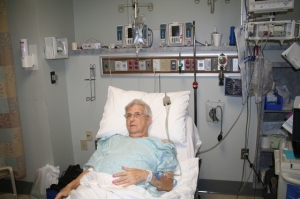by
Loren Bonner, DOTmed News Online Editor | May 02, 2013
The Centers for Medicare and Medicaid Services' proposed rule for new inpatient payment regulations seeks to accomplish a lot in the way of driving quality health care and better patient satisfaction scores. But one part that jumps out to many who read the rule is a statement about clarifying the admission for hospital inpatient services.
In the FY 2014 Inpatient Prospective Payment Systems (IPPS) proposed rule, released April 26, CMS seeks to clarify what constitutes an inpatient admission, which it says should span at least two midnights. The clarification is being looked upon by many experts as a way to redirect classifying patients as "observation status."
"The fact that they said in their press release that they are going to clarify their criteria suggests to me that they are concerned about these observation units, which are growing," Erik Johnson, senior vice president of Avalere, a health care consulting firm, told DOTmed News.



Ad Statistics
Times Displayed: 123382
Times Visited: 7162 MIT labs, experts in Multi-Vendor component level repair of: MRI Coils, RF amplifiers, Gradient Amplifiers Contrast Media Injectors. System repairs, sub-assembly repairs, component level repairs, refurbish/calibrate. info@mitlabsusa.com/+1 (305) 470-8013
Over the past decade, there has been a significant jump in what are known as observation units in U.S. hospitals. The number has doubled since 2003 with more than 36 percent of hospitals today reporting having a dedicated emergency department observation unit.
These rooms provide care and evaluation to patients who fall in between what might be considered an emergency room visit and a full-admission. Hospitals are jumping on the bandwagon because observation units are intended to reduce readmissions, which hospitals are now being penalized for under President Obama's health care reform law. But it's a trend that makes many, including the federal government, uneasy. By placing patients on "observation status" instead of admitting them, hospitals are avoiding an initial costly admission and the readmission penalty if they come back.
Additionally, hospital savings don't necessarily translate into lower costs for patients. In fact, it can mean just the opposite. Those patients who are kept for observation sometimes find themselves with hefty bills, according to the report in the Annals of Emergency Medicine.
Aligning with health care reform
In essence, the new IPPS rule, which is tweaked every year by CMS, is aligned with the goals of health care reform, which is aimed at reducing costs and improving the quality of health care. Some of what is included, like changes to Medicare payments for disproportionate share hospitals, are mandated under the Affordable Care Act, which goes into full effect in 2014.

